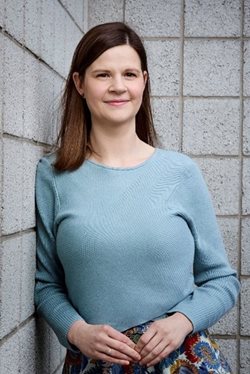Marta Bogowicz*, Didier Lustermans*, Vicki Trier Taasti, Colien Hazelaar, Frank Verhaegen, Gabriel Paiva Fonseca, Wouter van Elmpt
Department of Radiation Oncology (Maastro), GROW School for Oncology and Reproduction, Maastricht University Medical Centre+, Maastricht, The Netherlands
Published in Physics and Imaging in Radiation Oncology in January 2024.
Online: https://doi.org/10.1016/j.phro.2024.100566
What was your motivation for initiating this study?
At the time of our study, the HyperSight cone-beam CT (CBCT), integrated into a Halcyon accelerator (Varian Medical Systems, Palo Alto, California, USA), was a newly introduced technology, and our clinic was the first in Europe to install one of these scanners. Compared it its predecessors, this CBCT system is characterize by improved hardware (such as a large imaging panel) as well as advanced scatter corrections, increased acquisition speed and improved reconstruction algorithms, and finally more stable CT numbers. allowing for reliable CBCT-based dose calculation. Previously, low image quality in CBCT hampered dose calculation performance; therefore it caught our attention and motivated us to evaluate this innovative technology in its performance. We were also interested in exploring whether the stable CT numbers could be used to generate a CT-number-to-mass-density conversion curve, similar to the procedure used for conventional CT scanners. These improvements could facilitate an offline adaptive workflow that involved the use of CBCT images for re-planning. However, as with all new systems, it was crucial to verify and assess dose calculation accuracy before integrating it into the clinical workflow.
What were the main challenges during the work?
One of the main challenges was the selection of appropriate phantoms to verify dose calculation accuracy. Some phantoms are relatively simplistic compared to the complexities seen in patients. However, their use offered the advantage of allowing us to re-scan under identical conditions as were used for the conventional CT scan, enabling us to estimate the performance of CBCT-based dose calculations without anatomical changes. We chose a variety of phantoms to cover a wide range of typical target locations and treatment planning complexities, including abdominal, thorax, and head phantoms. For the head phantom, we included metal implants that could induce artefacts, such as a metal dental tooth and spine prosthesis, to verify CBCT-based dose calculations in challenging scenarios.
What is the most important finding of your study?
Firstly, we successfully generated a CT-number-to-mass-density conversion curve using the new CBCT technology, similar to what is done with conventional CT scanners. This included a curve specifically for patient size and tube potential. Secondly, we found that the dose calculation accuracy between CBCT-based and CT-based calculations was comparable. Our results showed that CT-based and HyperSight CBCT-based dose distributions were in agreement for all phantoms and were always above 97% and 93% for gamma analysis with criteria for dose differences and distance to agreement of 3%/1mm and 2%/1mm, respectively. In most phantoms, a gamma pass rate of nearly 100% was achieved for both gamma criteria. Remarkably, this high level of accuracy was maintained even in the head target location, which included metal artefacts that in the earlier generations of CBCTs would have caused significant inaccuracies in the CBCT-based dose calculations.
What are the implications of this research?
The study was focused initially on the exploration of the potential for offline adaptive radiotherapy. Images acquired during a treatment fraction can be used for plan adaptation in case of anatomical changes without the need for an extra CT appointment, which was not possible with older technology. Additionally, images obtained with a calibrated conversion curve can support offline adaptive workflows or CBCT-only workflows for palliative cases. HyperSight CBCT is now also available on systems that allow online adaptive radiotherapy as well. The study demonstrates that no post-processing methods are required, as we were able to generate a correct CT-number-to-mass-density conversion curve per tube potential, and this eliminates the need for synthetic CTs or the registration of planning CT images to daily CBCT images. The use of good-quality CBCT and fast acquisition simplifies both online and offline adaptive workflow. This research has demonstrated the potential of HyperSight CBCT, which improves the possibilities for more precise and patient-specific treatment planning.


Didier Lustermans Marta Bogowicz